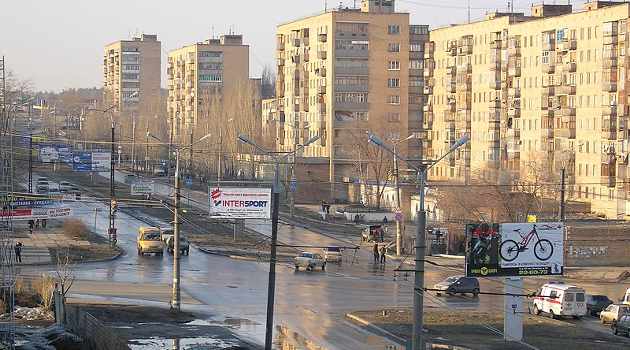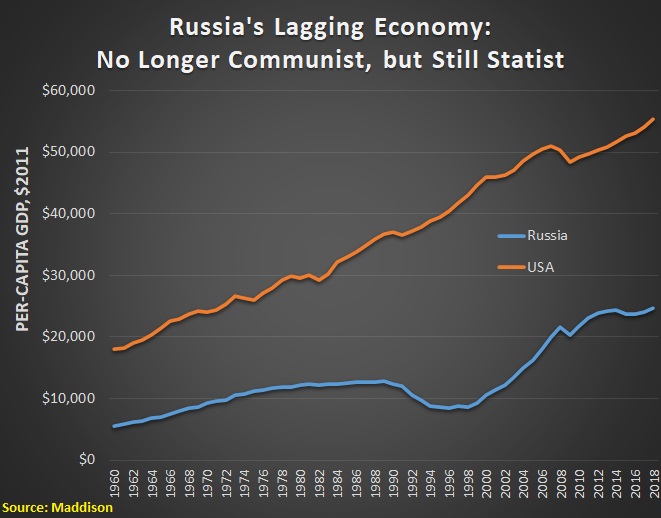Last year, I mocked Tucker Carlson for trying to make it seem like Russia’s moribund economy was successful.
Two years ago, I showed that Russia lagged behind other nations that emerged from the collapse of communism.
Three years ago, I shared a chart showing that Russia was an economic failure because of dirigiste economic policy.
Just in case it’s not obvious, I think Russia needs liberalization. More free markets and less statism.
With that in mind, let’s look at some not-too-distant history. Serge Schmemann has a very interesting column in the New York Times about how American officials had differing views of how to help Russia after the collapse of the Soviet Union.
Here are some excerpts.
It was March 1994…and the debates within the U.S. Embassy in Moscow were heated. Diplomats in the economic section, backed by the Treasury Department in Washington, argued ardently that radical free-market reforms were the only path for post-Soviet Russia, and that democracy would surely follow. Political advisers believed, equally passionately, that such “shock therapy” would only worsen the devastating dislocation Russians were already suffering with the collapse of the Soviet Union. …E. Wayne Merry, the top political analyst in the embassy and one of the most forceful critics of shock therapy, set out a detailed case against it in a long telegram… Attempts at market reforms had left much of the population destitute… Was America’s advocacy of “shock therapy” responsible for the rise of oligarchs and the ascent of Mr. Putin?
At the risk of over-simplifying, Schmemann’s column basically argues that the United States should not have pushed for radical economic liberalization after the Soviet Union fell apart. Instead, Americans should have let the Russians chart their own path.
That is a perfectly legitimate position. Indeed, many libertarians would agree that the crowd in Washington should not be cajoling or pressuring other nations to do good things or bad things.
But I have one niggling concern with the column, which is that Russia never had shock therapy. There was never a period of radical free-market reforms.
But don’t believe me. Here’s a chart from the Fraser Institute’s Economic Freedom of the World. As you can see, there was some improvement in economic policy after the collapse of communism, but Russia has never come close to having even French levels of economic liberty. And France is not exactly a pro-market paradise, to put it mildly.
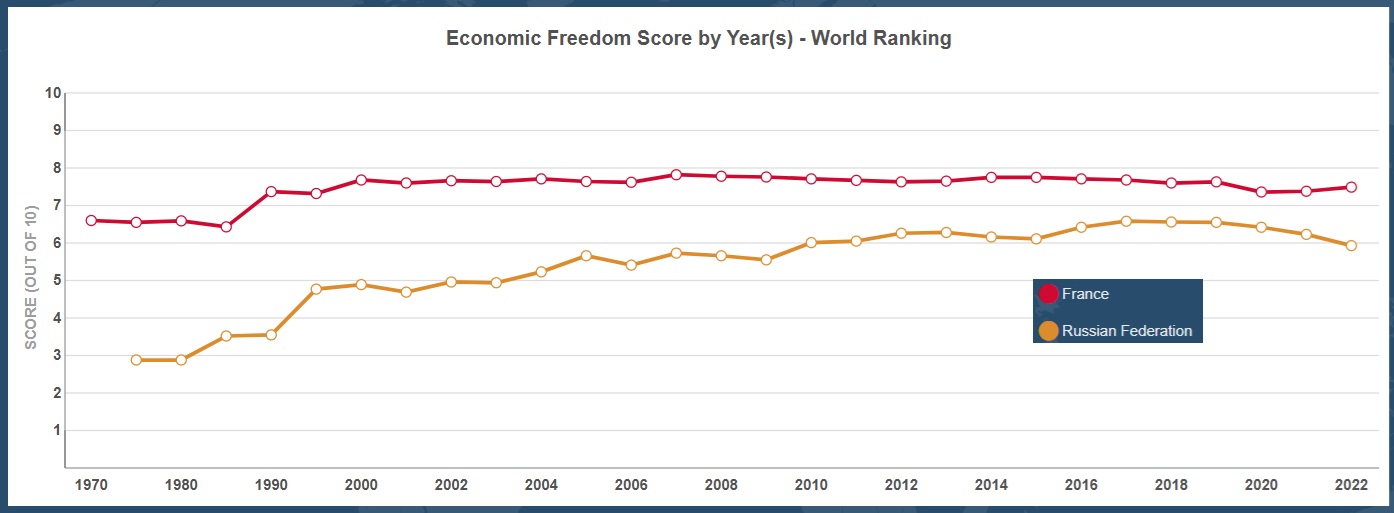
If you want a real example of shock therapy, look at the amazing things Javier Milei is doing to rejuvenate Argentina.
Or, if you prefer examples from the former Soviet Bloc, here’s another chart from the Fraser Institute, in this case showing economic liberty in Russia, Estonia, and Poland.
As you can see, Estonia did a lot of reform, Poland did a decent amount of reform, and Russia has been a bit of a laggard.
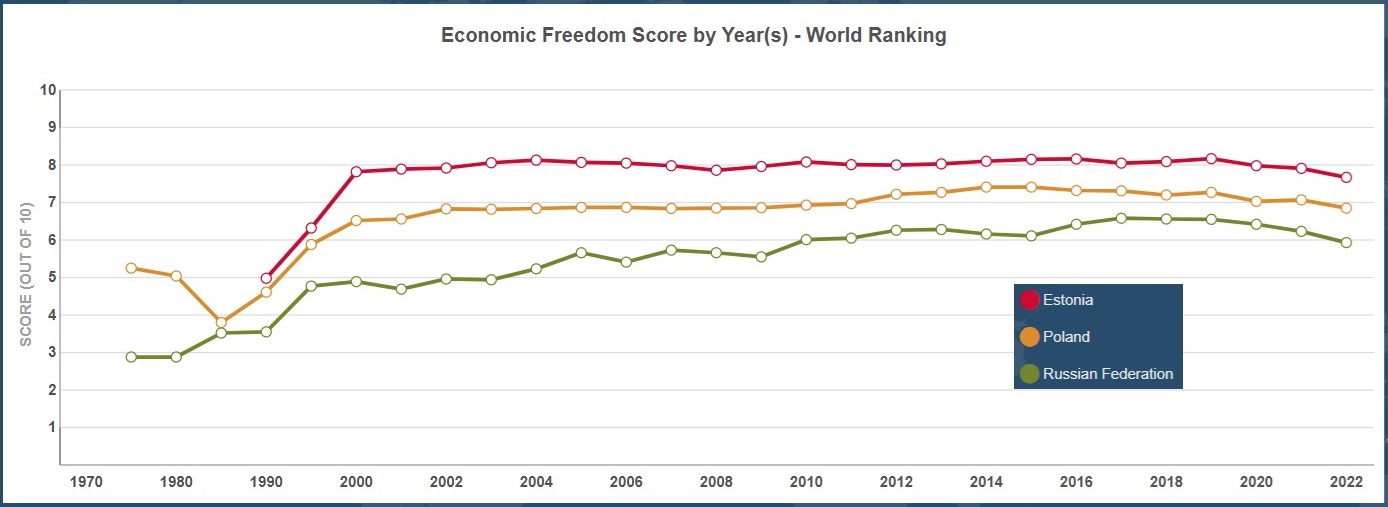
Now let’s examine one final graph, in this case from the World Bank.
Is anyone surprised to see that there is a clear relationship showing that the country with the most shock therapy is now the richest while the country that did the least liberalization is the poorest?
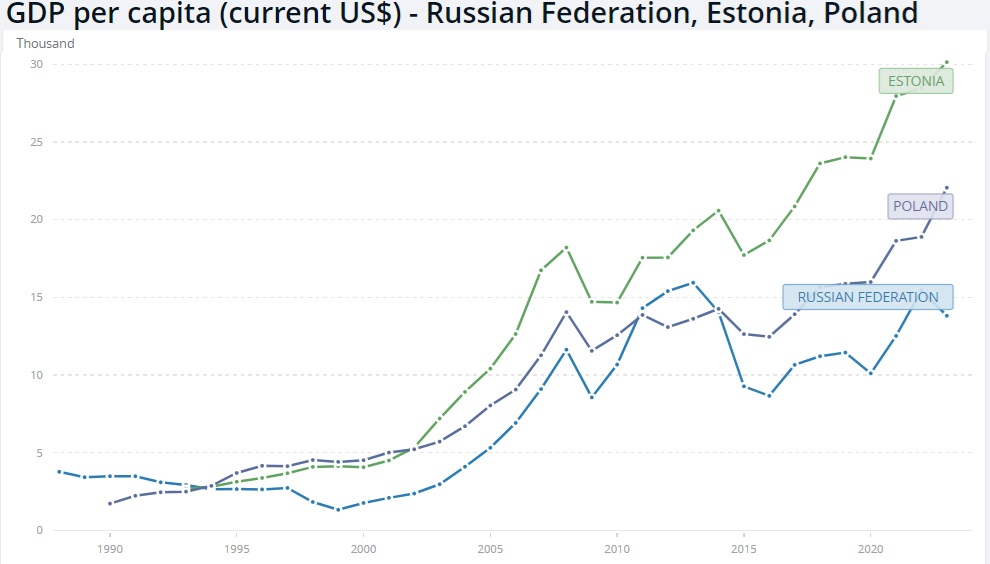
Gee, it’s almost as if there is a relationship between economic liberty and national prosperity.
P.S. Click here to learn more about Poland and Estonia.
———
Image credit: ShinePhantom | CC BY-SA 3.0 DEED.

